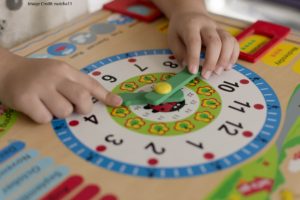Quite consistently, this post has been among the most searched for and most popular on the blog.
Teachers and administrators REALLY want to know: What is the optimal amount of time for our students to meet? What’s the very best schedule?
Here’s the best answer I have:
I met yesterday with several thoughtful teachers who had resonant questions about education research.
How do we balance factual learning and deep thinking?
What’s “the right amount of stress” during a test?
How can we promote collaboration while honoring individual differences?
And:
What’s the optimal class length?
This question comes up often. Should we have lots of short classes, so every subject meets every day? Should we have a few longer classes, so that we can dig deeply into a particular topic without interruption?
Debates sometimes fall along disciplinary lines. Foreign language and math teachers often want frequent class meetings; English and History teachers typically like bigger chunks of time for discussions.
Science teachers just gotta have 80 minutes to run a lab well.
But: what does research show?
Class Length: What Research Tells Us
As far as I know, we just don’t have a clear answer to that question.
Over at the Education Endowment Fund, for example, they’ve investigated the benefits of block scheduling: that is, a few long periods rather than several short ones.
The finding: we can’t really say. Or, to quote EEF: “There is no consistent pattern in the evidence.”
More precisely:
The evidence suggests that how teachers use the time they are allocated is more important than the length of lesson or the schedule of lessons, and hence that the introduction of block scheduling is unlikely to raise attainment by itself.
By implication, a change away from block scheduling shouldn’t raise attainment either.
The point is not how long we teach but how well we teach with the time we’ve got.
For this reason, I often counsel schools and teachers: before you change your schedule, study human attention systems.
Once teachers know how attention works — and, it’s A LOT more complicated that we might have thought — we’ll be much better at helping students learn. (If you have the chance to attend a Learning and the Brain session about attention: RUN, don’t walk.)
Class Length: What Research Can’t Tell Us
Research doesn’t answer this question, I think, because it can’t. There’s no one correct answer.
If you teach 2nd graders or 7th graders or 11th graders, you’ll probably find that different lengths of time work better.
If you teach in cultures that inculcate patience and concentration, longer classes will work better than in cultures with a more get-up-and-go kind of pace.
The number of students in the class might matter.
The experience of the teacher almost certainly matters.
When your school starts investigating schedules, therefore, I suggest you start with these essentials:
First: study human attention.
Second: don’t design “the optimal schedule.” Design the optimal schedule for your school and your students. It might not work at anyone else’s school, but it doesn’t need to.
A schedule that works for you and your students is the closest to optimal that you can get.
![The Best Length of Time for a Class [Repost]](https://www.learningandthebrain.com/blog/wp-content/uploads/2018/02/AdobeStock_84421734_Credit-1024x683.jpg)



![Laptop Notes or Handwritten Notes? Even the New York Times Has It Wrong [Reposted]](https://www.learningandthebrain.com/blog/wp-content/uploads/2020/08/AdobeStock_176381909_Credit.jpg)

![Growing Mindsets in Argentina? [Repost]](https://www.learningandthebrain.com/blog/wp-content/uploads/2019/07/AdobeStock_75977513_Credit-1024x664.jpg)

![Obsessed with Working Memory [Reposted]](https://www.learningandthebrain.com/blog/wp-content/uploads/2017/09/AdobeStock_44554611-1024x853.jpg)
